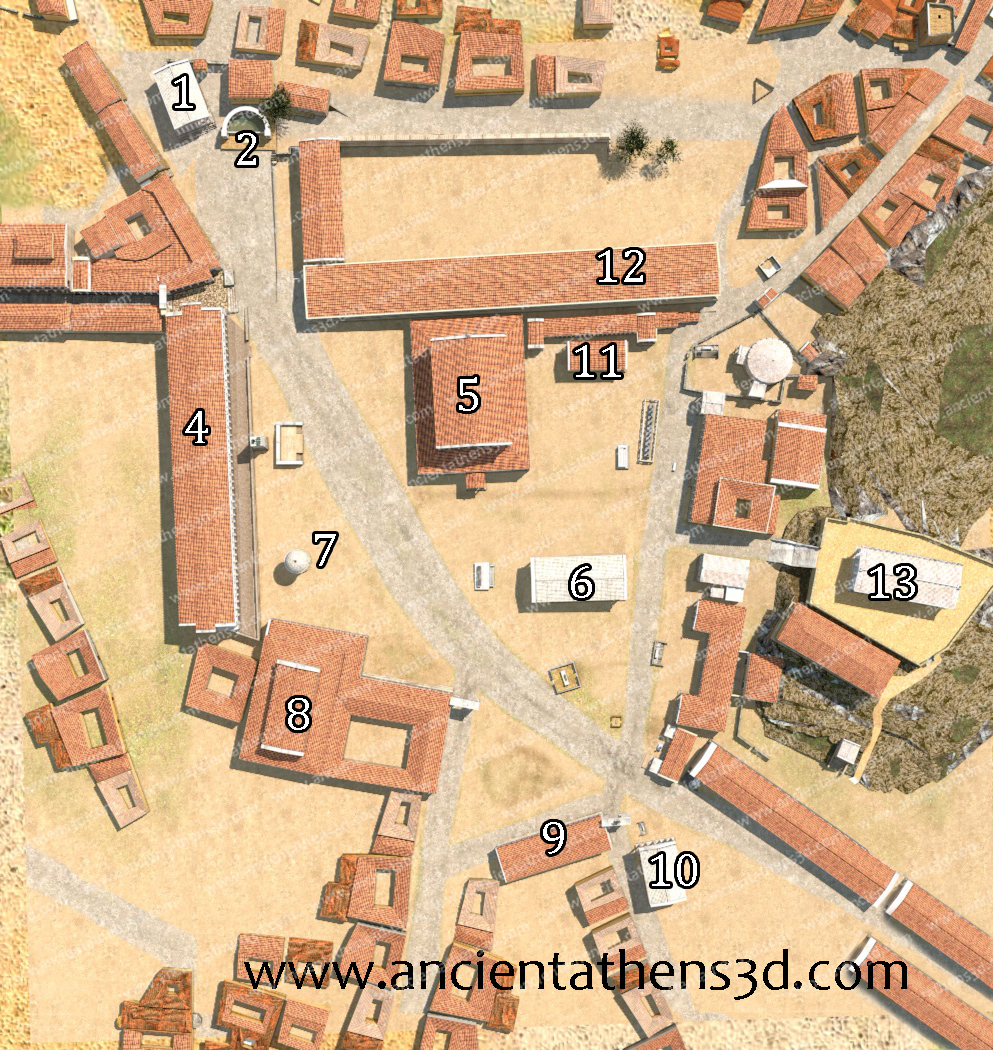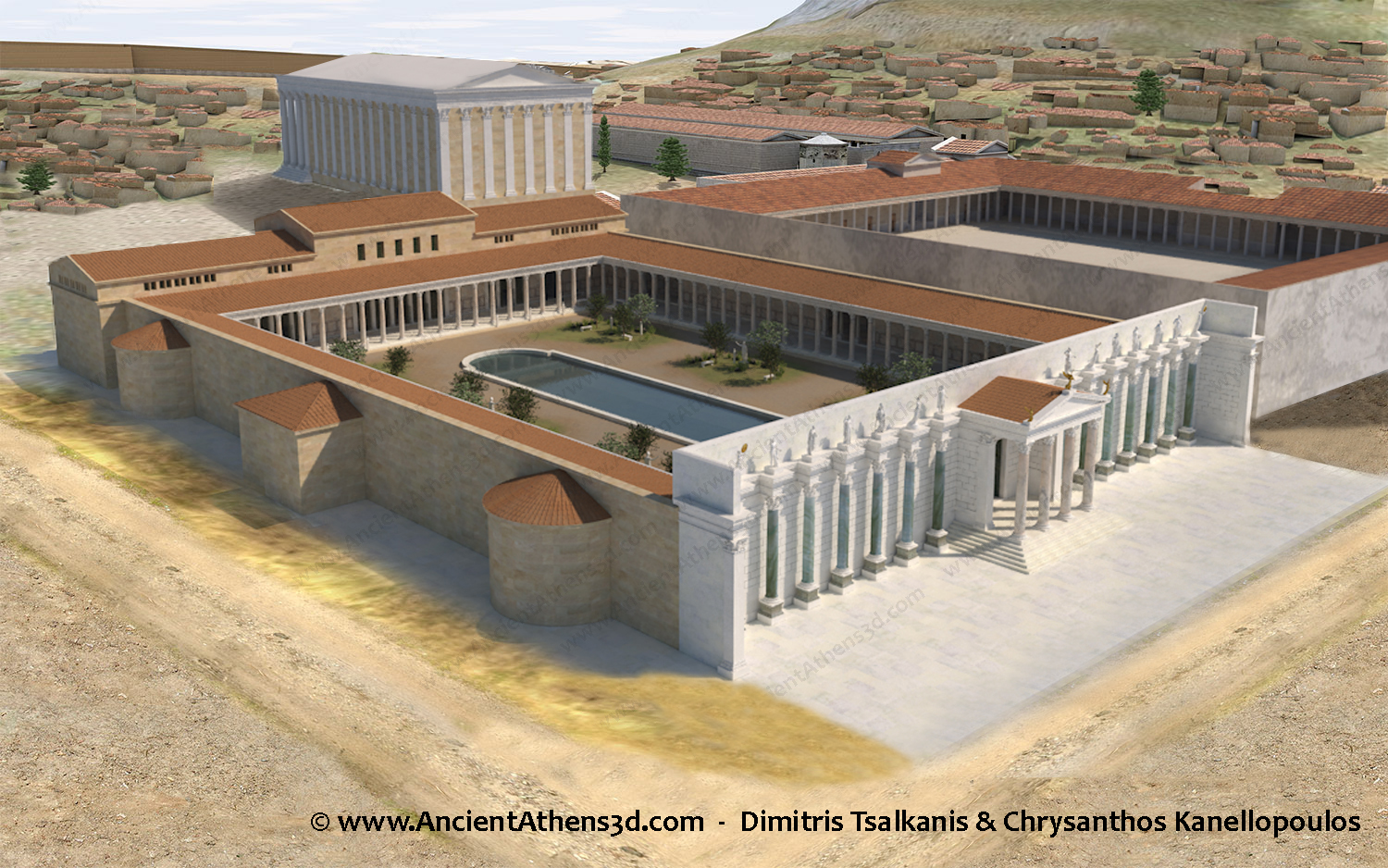The Agora in roman times (86 BC - 267 AD)
In the Roman period many new buildings were built in the Agora. The Romans honoured Athens by decorating the city with elegant public buildings. The first roman emperor, Augustus, made the first steps for this. With his order a whole classical temple was transported in the Agora and was rededicated to god Ares, while his general Agrippas built in the middle of the Agora, the Odeion.
Here follows a presentation of the most important monuments of the Roman period Agora.The Odeion of Agrippa (15 BC)
The Odeion of Agrippa was erected by the Roman general Marcus Vipsanius Agrippa during his visit in Athens in 16-14 BC. It was intended for musical shows and could accomodate 1.000 spectators. The South side was joined with the Middle Stoa, thus creating the one of two entrances. The main room was 25 metres long and did not had any interior columns. This led to a roof collapse 160 years later (150-175 BC). Immediately extensive repairs followed. The new north facade was decorated with the statues of Giants and Tritons which are still visible in the area. The central room became smaller and the capacity was limited to 500 spectators. As a result the Odeion was only used for philosophic lectures, as at the same time a new Odeion was built in the southern slope of the Acropolis, the Herodeion.
The temple of Ares (440 & 15 BC)
The temple of Ares was a classical temple built in the 5th c. BC together with the other three almost identical temples (Temple of Hephaistus in the Agora, Temple Poseidon in Sounio and the Temple of Nemesis in Ramnous). In the end of the 1st c. BC, the temple was transported from some other point of Attica in pieces and was re-erected in front of Agrippa’s Odeion. During the reign of Augustus, the transportation of classical buildings to Athens was a usual phenomenon. The place from where it was transported is not certain. However, the latest studies show that it may have been originally built in ancient Pallini and was initialy dedicated to godess Athena. There the foundations of a temple of the same dimensions were found but without any traces of the actual building at all.
Monopteros and Basilica
The Basilica of the Agora was constructed during the reign of Hadrian. It was the characteristic type of a roman basilica and was used for commercial reasons or counsil meetings.
The Monopteros was a circular building that was built in the beginning of the 2nd century AD. Its use is uncertain. Possibly it was a small temple or a fountain.The Library of Pantainos (98-102 AD)
The Library of Pantainos was built by the Athenian Titus Flavius Pantainos between 98 and 102 AD. It was a building used as a library which is obvious from the two inscriptions found in the area. According to one of them, Pantainos with his son and daughter gave the books, the equipment and dedicated the building to the emperor Trajan. It is very likely that the building preexisted and that Pantainos added the stoas around it and the internal colonnade. Another inscription reads: “No book shall come out of the library because we gave an oath. The library will be open from the first to the sixth hour“.
Nymphaeon and the SE Temple
General views of the Agora during the roman period




















